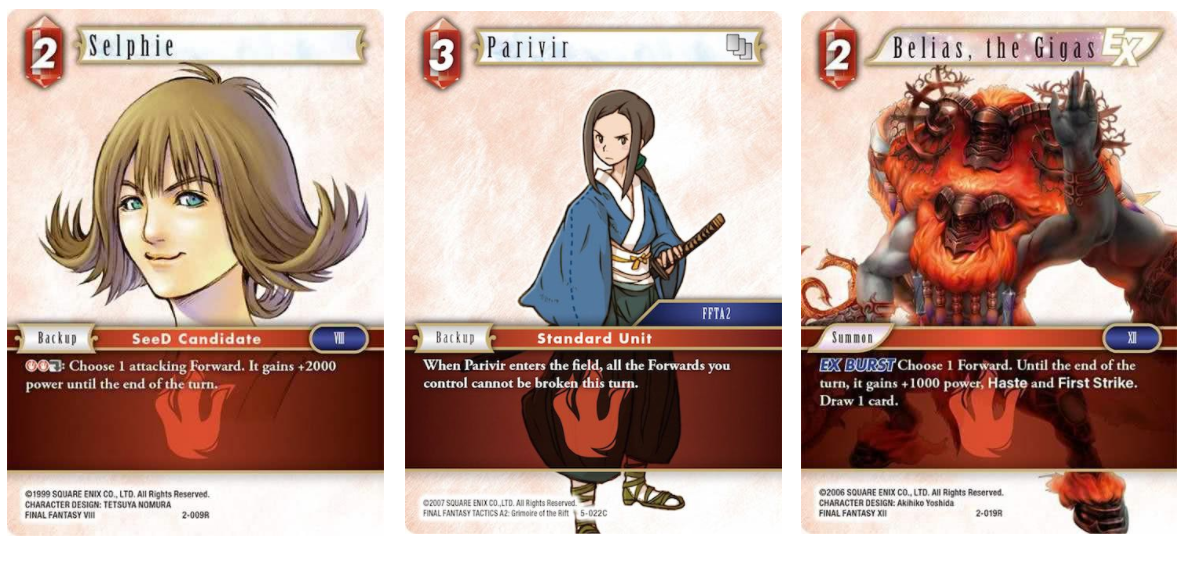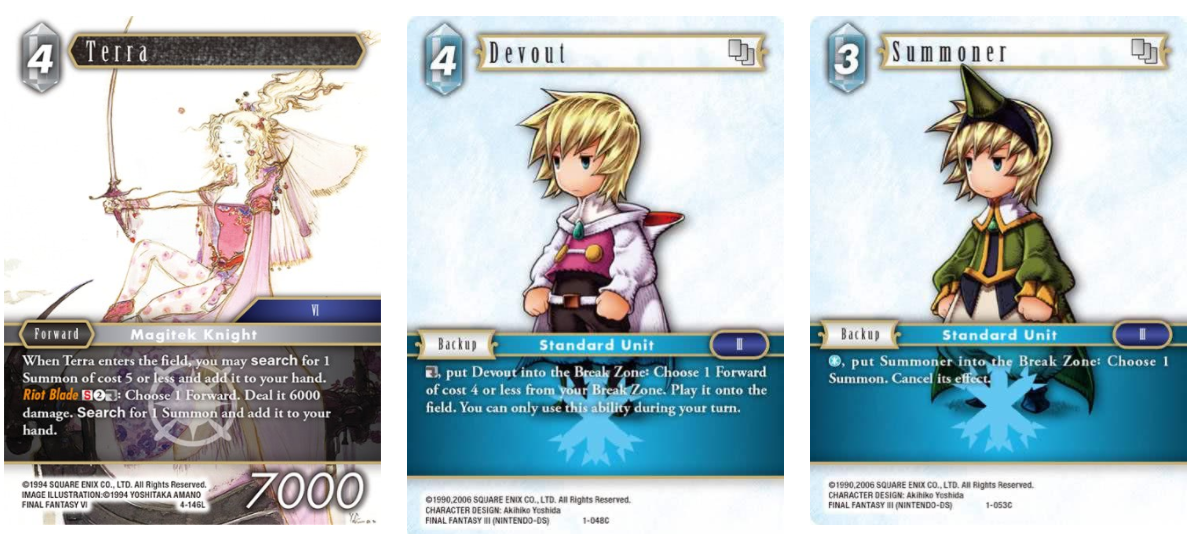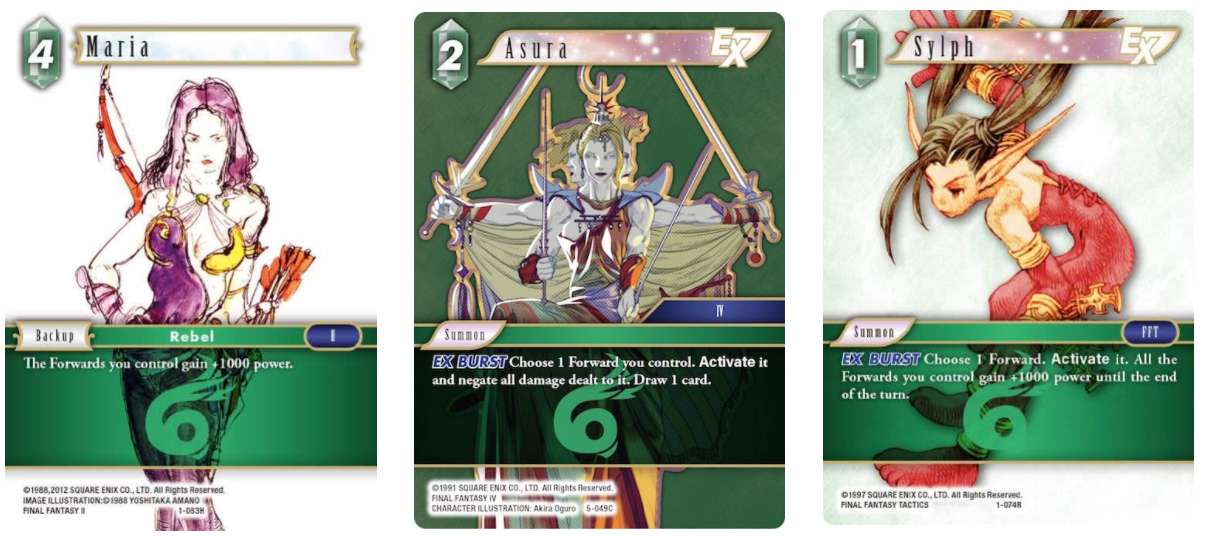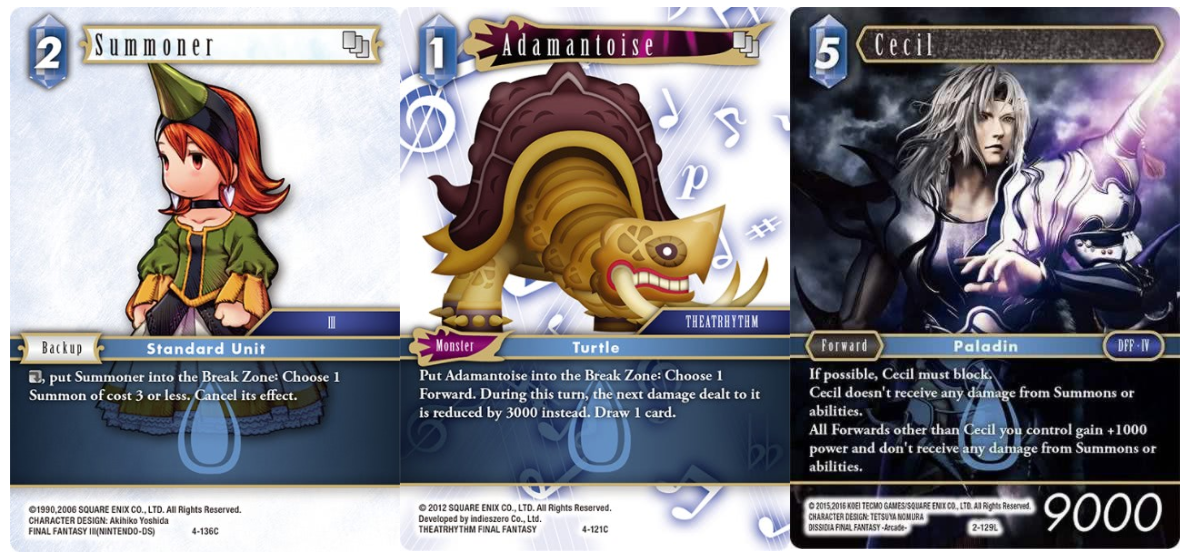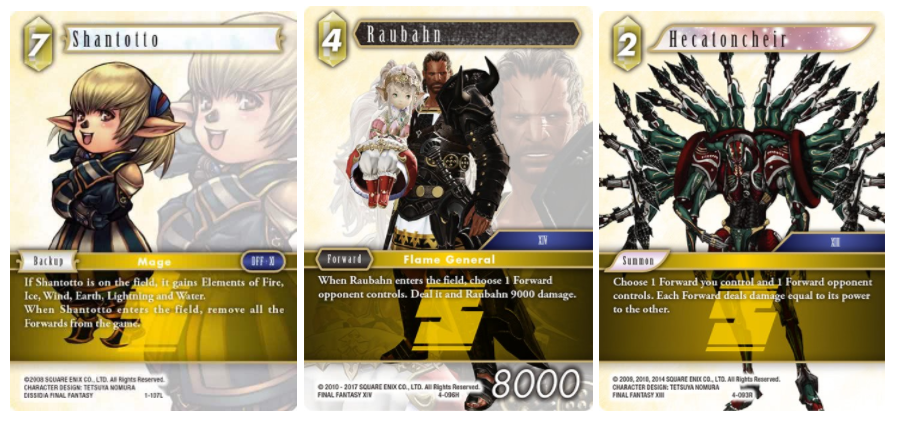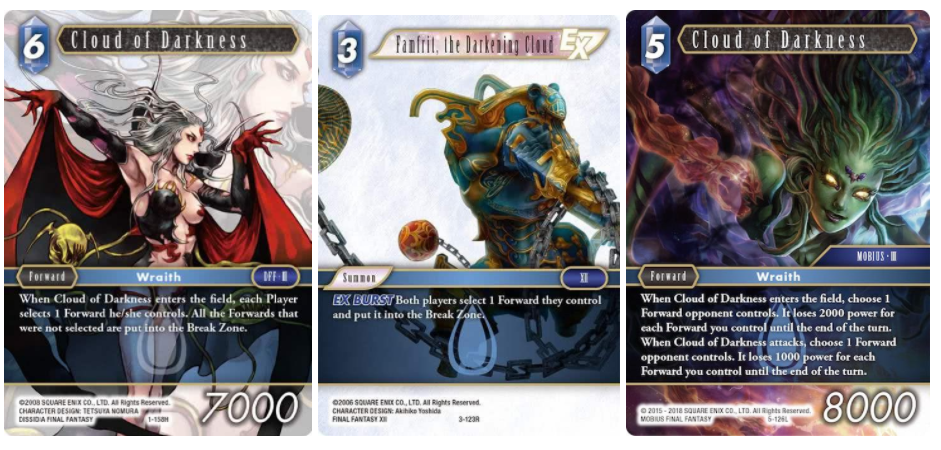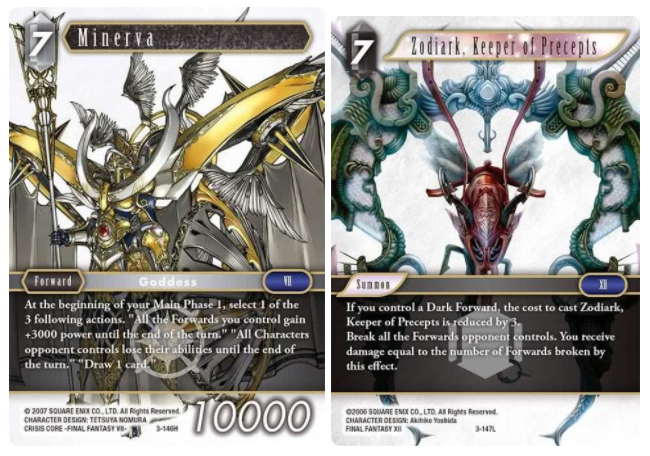Let's Talk About Cards: The Emperor (2-147L)
Hello, and welcome to Let’s Talk About Cards. The hope for these articles is to give players a concentrated insight into the usages of individual cards. This will include discussing a card’s synergies, a card’s role at different stages in the game, non-intuitive rulings or interactions, and counter-strategies.
All bow before his Imperial Majesty, The Emperor (2-147L). In addition to dressing like a baller, the Emperor is certainly one of the most omnipresent cards in the game. Playable in any element, providing an indispensable, unique, and one-sided effect, in addition to having an average power for his cost, it’s not difficult to see why. He also doesn’t require any support from other cards to be effective. If that wasn’t enough, his ability shuts down many Character-based answers.
In the interest of full disclosure, I feel that most decks should probably play The Emperor. Few Light or Dark cards compare in terms of raw power, and most decks benefit from having their opponents unable to use action abilities.
Because The Emperor can be played in nearly any deck archetype, this article will focus on the ways he can be protected from removal: The Emperor does not need much support to be effective at what he does. The counter-strategies section will look at cards which effectively remove the Emperor. It would be foolish to not play a set of answers to The Emperor if your deck is reliant in any way on action/special abilities; the majority of strong decks are.
User discretion is advised in ignoring The Emperor.
Rulings and Interactions
The Emperor’s single sentence shuts down entire strategies: "Characters opponent control cannot use special or action abilities."
An action ability in FFTCG is any ability which takes the form “cost : effect.” Look for the colon.
Note that Special abilities are not a subset of action abilities, despite their colon. They can be identified by the S symbol in their cost and the orange text of the ability name. In the case of these abilities, the opposing player cannot pay any costs of such abilities, and as a result, cannot use the associated ability. This is different from countering any action or activated abilities, so that they do not resolve. There are times when a player might wish to pay a cost, even when they do not get the effect; The Emperor deprives them of this option.
The Emperor does not, however, impact auto or field abilities. Auto abilities may be familiar to you under the term triggered abilities, if you have a background in Magic: the Gathering. Auto abilities do not have a cost, but can be identified by keywords specifying their time of occurrence. "When" and "Whenever" are two big indicators of an auto ability.
Field abilities are best identified by their lack of costs or condition words. If something isn’t an action, special, or auto ability, it is a field ability. If your opponent has auto or field abilities, The Emperor will not impede their effects in any way, and this will be crucial in how they enact counter-strategies. For much more detail on ability types, please reference Jared Scott’s delightful article Identifying Ability Types.
Finally, and most interestingly, The Emperor, like all other Forwards, Backups, and Monsters in FFTCG, does not use the stack. This means that when a player plays The Emperor, there is no window to respond with activated or special abilities before he enters. Thus, if the first thing a player does on their turn is play The Emperor, you’re out of luck until you can remove him. This makes The Emperor a back-breaking tempo play, and forces players to make a difficult choice between leaving abilities up during their opponent’s turn or getting immediate value on their own turn.
Synergies
As previously stated, The Emperor doesn’t need help to get the job done. However, in the presence of removal, most decks playing The Emperor have some options that they can leverage to protect him. There is nothing special about these particular cards, and these cards could be used just as well by any deck to protect another Forward. However, I find that in presence of flexible cards with powerful effects, players forget to consider the card in the context of the entire strategy that their opponent is presenting.
In other words, it’s painful to lose because you were so busy trying to kill The Emperor that you forgot your opponent had access to something protective or disruptive.
Kitty-paw-hands and he doesn't even care.
Ozma is an example of a card with both a special ability and an action ability.
Ozma dislikes The Emperor.
Fire
Mono Fire decks have yet to truly come into their own on the competitive scene, and the sample size for Mono Fire decks playing The Emperor is incredibly small. A Mono Fire player looking to protect The Emperor has exactly three cards: while attacking and using Selphie (2-009R) to get a slight power bump, for one of their turns with Parivir (5-022C), and most relevantly, Belias, the Gigas (2-019R). While Belias, the Gigas (2-019R) is incredible in its own right, Selphie (2-009R) isn’t an auto-include and Parivir (5-022C) is a suspect choice at best. Once again, this isn’t to say that The Emperor shouldn’t be played in Mono Fire, but that he has few tools to protect him.
Ice
Ice is one of the strongest elements in the game, at least during the Opus V era. Whether it’s because of, or in spite of, this strength, many Ice decks pass on playing The Emperor, instead opting for Terra (4-146L). Ice, like Fire, doesn’t have many reasonable ways to protect The Emperor, but it does have one of the best: Devout (1-048C). This card lets your opponent sink their resources into breaking a big threat, only to bring that Forward right back into the action. Summoner (1-053C), though not frequently played due to the number of quality backups most Ice decks have to choose from, can be used to counter any threatening summon (though it doesn’t help with the case of EX bursts).
Wind
Slightly better off than Fire, Mono Wind decks don’t have a clear niche in the metagame yet, though that may be changing with Adelle (5-050H) and Arc (5-052H) providing the ability to get damage through. They do have some great tools for protecting The Emperor, so it’s always surprising when I see Wind decks not playing him. Maria (1-083H) is the only anthem effect that buffs The Emperor, and that 1000 power is a huge boon: 9000 power is way more than 8000 when it comes to surviving removal. Asura (5-049) is an exciting card that can not only blank removal and win combat, but also draws replaces itself. Sylph (1-074C) acts like a worse version of Belias, the Gigas (2-019R), perhaps saving The Emperor from removal targeting dull Forwards or pushing him out of range.
Earth
Mono Earth has been on the rise since Opus V’s release. Although the Kam’lanaut (5-148H), Zodiark, Keeper of Precepts (3-147L), and Gabranth (5-078R) combo has provided some gimmicky competition, The Emperor finds a solid throne in the home of stone.
Miner (5-082C) provides a consistent source of recursion if your opponent removes The Emperor. Titan (1-110C) prevents him from breaking. Ingus (5-074H) can allow you to give him a bump in power to survive combat or damage-based removal. Wol (5-075L) provides unique protection from EX Bursts that allows an Earth player to attack without fear of reprisal.
Lightning
Mono Lightning decks have been playing The Emperor since their inception, thoroughly enjoying the ability to deprive their opponents of abilities which can kill their often undersized Forwards. They do this despite the fact than they have exactly zero cards which protect him in any meaningful way. Ricard (1-146H) is the closest they come to a protective option, and this card has likely never seen play. Perhaps Mono Fire decks should be taking a cue from Lightning decks?
Water
Finally, Mono Water has a plethora of protective options for The Emperor. Many of them will be familiar to you, if you read my first article. Minwu (1-171H) halts any incremental damage that might be dealt to all forwards. Bismarck (5-133H), Refia (5-141H), Scholar (1-157C), and most of the Leviathans can return him to your hand, saving him from an untimely demise. Summoner (4-136C) will cancel an inexpensive summon aiming to take him out. Adamantoise (4-121C) can soften a lethal blow, and is likely to be around in the Water/Earth Monster deck. Cecil (2-129L) turns off damaging summons and buffs The Emperor, making him perhaps the strongest defensive options available for The Emperor in any element.
Roles
Having discussed many of the common ways The Emperor might be protected, we turn now to why so many decks should be playing him.
The Emperor is excellent at buying time for his controller. With action and special abilities central to so many game plans, having to deal with The Emperor presents a significant hurdle in establishing a favorable board and punching damage through. Mono Water is the clearest example of a deck which greatly benefits from a few turns with lightened pressure, as their buildup is quite slow. Mono Ice and controlling Mono Wind decks can also benefit from this added time.
On the flip side of point one, The Emperor can prevent an opponent from ever stabilizing to begin with. Mono Lightning, with its breadth of removal options, and weaker Forwards, uses The Emperor to prevent opponents from ever controlling their board, sometimes closing out the game before an answer is ever found. I believe Mono Fire decks could utilize The Emperor in a similar way, if they could step away from Cloud-based synergies which appear too inconsistent. Aggressive, unblockable Mono Wind decks will also embrace The Emperor in due time.
The Emperor operates on his own unique axis of pressure: nothing else in the game proactively prevents action and special abilities. As a result, The Emperor can be a vexacious addition to decks that look to tax a player’s resources with a diverse portfolio of threats. The Emperor can assist the most prison-like Mono Ice decks, with their discard and freezing, by constricting their options further. He can also add to Mono Earth’s collection of difficult to answer Forwards. I believe that a good Mono Fire deck will eventually appear, and it’ll be a midrange list utilizing The Emperor to help make sticky, resilient attackers like Sabin (4-021L) and Llednar (4-024R) even more difficult to deal with.
Sometimes, your opponent won’t be playing a common deck. The Emperor will be there. There may not be any apparent synergy or purpose. But he will be there. “Just ‘cause” is sometimes the only reason a player needs, and you should be aware that The Emperor may show up at whatever time is most inconvenient for you.
Counter-Strategies
Having discussed his usage and the ways to protect him, we come now to the ways we deal with him. It should go without saying that action and special abilities are out, so what do we have left? There isn’t much magic to fighting The Emperor; there’s no secret sauce. You just have to play some number of cards that break him. In lieu of an explanation, I’m going to provide a short list for each element. Play some of the cards. Don’t lose to him. If your element doesn’t offer a desirable answer, consider an additional element.
For the sake of convenience and brevity, I will exclude combinations of cards which deal up to 8000 power and also combinations of cards which reduce or change The Emperor’s power. Images will show the most reliable answers available to each element.
Fire
Bahamut (1-018L)
Emperor Xande (2-007L)
Bahamut (4-016R)
Ice
Mateus, the Corrupt (2-044R)
Cid Aulstyne (3-036H)
Shiva (4-033C)
Mateus, the Corrupt (5-044C)
Wind
Chaos, Walker of the Wheel (3-071H)
(Editor's note: Wind really, really needs more answers to The Emperor. This alone, in my opinion, makes Mono Wind a tough meta call.)
Earth
Shantotto (1-107L)
Raubahn(2-093H)
Atomos (3-074R)
Masked Woman (3-076R)
Zeromus, the Condemner (3-087H)
Atomos (4-073C)
Kefka (4-080L)
Delita (4-087R)
Hecatoncheir (4-093R)
Raubahn (4-096H)
Cecil (5-086L)
Lightning
Odin (1-123C)
Odin (1-124R)
Al-Cid (2-097H) + Half a Dozen Different Friends Who Deal Damage
Edea (2-099L)
Exodus, the Judge-Sal (3-112H)
Raiden (4-114L)
Water
Cloud of Darkness (1-158H, sometimes)
Famfrit, the Darkening Cloud (3-123R, sometimes)
Cloud of Darkness (5-126L)
Light
Minerva (3-146H) - Earns a special mention for shutting off The Emperor’s effect on your turn.
Dark
Zodiark, Keeper of Precepts (3-147L)
Conclusion
The Emperor is, without a doubt, one of the most polarizing cards in the game. Every element can wield him effectively, but not every element has a reasonable number of good answers. Examination of those elements which can effectively play, support, and answer The Emperor provides insight into why certain decks are powerful, and why others can’t seem to place well. Understanding your deck’s game plan against The Emperor is a must for both competitive and casual players alike.
The empire? Ha!
I've no need for such trifles now.
About the author: Joe Giallo's favorite archetype to play in FFTCG is Mono Water. His favorite Final Fantasy game is V.




